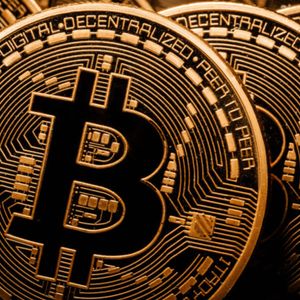The US Senate is getting ready to pass the GENIUS Act, a bill that will finally set legal rules for how stablecoins are issued and backed. This law would allow companies behind these dollar-backed tokens to store reserves in banks, buy Treasuries, or lend money to banks the same way money-market funds do. The point is to regulate a fast-growing part of crypto that’s starting to bite into the traditional banking system. The real issue isn’t whether stablecoins remove money from banks—they don’t—it’s what kind of money gets left behind and who ends up holding the risk. When someone mints a stablecoin using real US dollars, the issuer has to put those dollars into reserves. That money isn’t lost. It moves into a bank account, into government debt, or into short-term lending deals called repurchase agreements. But here’s what changes: that money no longer sits in a low-risk, government-insured account under $250,000. Instead, it piles into massive, uninsured accounts that can vanish the second panic hits, making what used to be stable retail cash become volatile corporate cash. And that cash doesn’t stick around long when things go sideways. Stablecoins create pressure on deposits and insurance JPMorgan Chase analysts wrote that stablecoins are basically a digital form of money-market funds. In their words, “bank deposits are not ‘destroyed’ by such a change, but are simply transferred to other economic agents.” The problem isn’t disappearance, it’s exposure. What banks end up with is more risk. And that’s where it gets messy. Researchers at the European Central Bank called it out clearly: “Collecting deposits from stablecoin issuers transforms retail deposits that can serve as a stable source of funding for banks into volatile deposits that cannot.” That’s what scares regulators. Because if too many people move insured deposits into stablecoins, banks end up with fragile funding structures. And it’s already happened before. In March 2023, Circle Internet Group, the company behind USDC, tried to move more than $3 billion out of Silicon Valley Bank as it was collapsing. But the transfer didn’t settle before the FDIC took over, and to make matters worse, USDC dropped below $1 on multiple exchanges, losing its dollar peg. In its public filing, Circle confirmed that the dislocation only ended after regulators guaranteed all deposits at SVB. The biggest banks will survive, but smaller ones will take the hit Circle also said in its filing that it changed how it manages reserves, holding the “significant majority” of its cash with global systemically important banks, which include Bank of America, JPMorgan, Citigroup, and Wells Fargo. These giants are built for liquidity, as they’re already required to hold enough high-quality assets to weather big swings, which gives them an edge when stablecoin issuers start moving billions around. But smaller banks aren’t built for that. If everyday savers start using stablecoins for regular spending and short-term savings, small banks are the first to feel it. Their biggest strength, government-insured retail deposits, gets eaten away. Their main advantage becomes a weakness. And there’s more. Some big banks are now discussing the possibility of issuing stablecoins themselves. The Wall Street Journal reported that major US banks are in early talks to jointly launch a stablecoin. That would pull even more power away from smaller institutions. If the same banks already dominating global finance start minting their own crypto-backed dollars, they won’t just be hosting reserves; they’ll be controlling the entire pipeline. Meanwhile, the ecosystem around stablecoins is growing. People are starting to earn yield just for holding these tokens. And there’s now a market for tokenized Treasurys, meaning people can earn returns on government debt without ever touching a bank. That puts even more pressure on banks to raise their interest rates, which eats into their profits. Cryptopolitan Academy: Want to grow your money in 2025? Learn how to do it with DeFi in our upcoming webclass. Save Your Spot



















